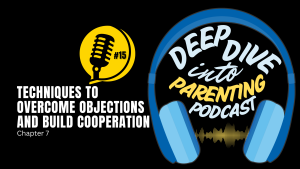Introduction
In today’s digital age, understanding dopamine is key to addressing behaviors influenced by technology. For instance, dopamine drives compulsive social media scrolling as users seek likes and comments for instant gratification, and it fuels binge-watching by creating anticipation for the next episode, making it difficult to stop. These behaviors include excessive screen time, compulsive social media use, and prolonged video gaming. Recognizing how dopamine shapes these habits is essential for parents and educators striving to mitigate their impact. This neurotransmitter plays a vital role in shaping human actions, reinforcing habits, and driving addictive behaviors. By comprehending the effects of dopamine, parents and educators can develop strategies to counteract its impact and foster healthier habits, especially in children and teenagers. Beyond its biological functions, dopamine’s role in modern technology unveils profound insights into why digital devices captivate us and how we can regain control.
What is Dopamine?
Dopamine is a chemical messenger in the brain, integral to the reward and pleasure systems. It is released during activities that the brain perceives as beneficial, such as eating, achieving goals, or socializing. This neurotransmitter not only reinforces actions but also drives anticipation and motivation, creating a powerful cycle that shapes behavior. Its influence extends beyond survival, playing a pivotal role in modern habits and lifestyle choices.
Dopamine’s Evolutionary Role
Historically, dopamine reinforced survival-driven actions:
-
High-calorie foods provided energy, prompting the brain to release dopamine as a reward.
-
Social bonds and cooperation enhanced survival, with dopamine reinforcing positive interactions.
However, in the modern world, artificial stimuli—such as video games, social media, and processed foods—have hijacked this system, often leading to unhealthy behaviors and dependencies. Unlike natural stimuli, which offer balanced and context-specific dopamine responses, artificial stimuli deliver exaggerated and frequent dopamine surges. These surges overwhelm the brain’s reward pathways, creating stronger and often unmanageable cravings that are less tied to survival or long-term benefit. The mechanisms of dopamine, once evolutionary safeguards, now frequently work against our well-being in a digital age saturated with overstimulation.
The Dopamine Feedback Loop
Dopamine creates a loop by reinforcing pleasurable activities. For example:
-
Eating a sugary treat releases dopamine, creating a craving for more. The effect is typically short-lived, often requiring repeated consumption to sustain the dopamine surge.
-
Achieving a milestone in a video game triggers a similar response, but the loop in gaming is deliberately prolonged. Games introduce escalating rewards, which maintain anticipation and extend the dopamine cycle far beyond what natural stimuli, like eating, can achieve.
This cycle, while natural, becomes problematic when artificially amplified, as seen with digital devices.
This cycle, while natural, becomes problematic when artificially amplified, as seen with digital devices. The exaggerated release and constant anticipation foster dependency, altering behavioral patterns significantly.
How Video Games Exploit Dopamine
Game designers intentionally leverage dopamine’s effects to enhance player engagement by:
-
Balancing challenges and rewards to maximize dopamine release.
-
Creating anticipation for future achievements.
-
Offering intermittent rewards, mimicking gambling mechanisms.
These tactics ensure prolonged engagement and reinforce habitual use. The calculated application of dopamine principles in games transforms entertainment into an intricate psychological pull, often at the expense of real-world experiences.
Social Media and Dopamine
Social media platforms employ strategies to exploit dopamine pathways:
-
Notifications, likes, and comments provide instant gratification, creating a sense of immediate reward.
-
Algorithms prioritize content that holds attention longer, ensuring a steady stream of dopamine hits.
Over time, these mechanisms can erode long-term attention spans, as users become accustomed to instant feedback and find it difficult to focus on tasks requiring sustained effort. Furthermore, the persistent engagement with social media can contribute to mental health challenges, such as anxiety or depression, as users compare their experiences to curated content and struggle with feelings of inadequacy or fear of missing out.
Sean Parker, co-founder of Facebook, admitted these platforms were designed to consume as much time and attention as possible by exploiting “human psychology vulnerabilities.” For example, algorithms are tailored to maximize engagement by predicting user behavior, while features like infinite scrolling and push notifications encourage prolonged use. Studies have shown that such design choices significantly increase the time users spend on these platforms, often at the expense of their mental health and productivity. This deliberate







